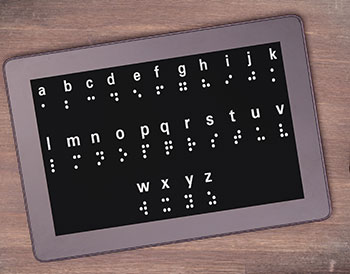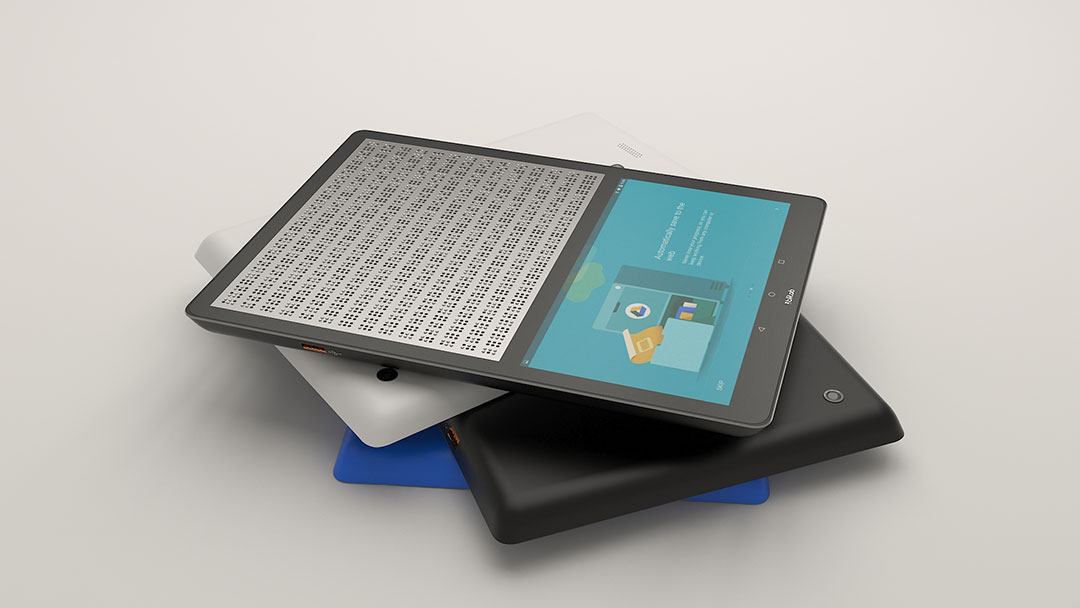Lightweight Technology for Low Vision: A Game-Changer in Accessibility
Lightweight Technology for Low Vision: A Game-Changer in Accessibility
Blog Article
Discover Innovative Devices Designed for the Aesthetically Damaged
The advancement of ingenious tools for the aesthetically damaged represents a considerable improvement in availability and self-reliance. Technologies such as smart glasses with AI abilities and mobile applications developed to offer acoustic summaries are improving day-to-day experiences for individuals.
Smart Glasses for Navigating

Smart glasses created for navigating are changing the means visually impaired people communicate with their setting. These sophisticated gadgets utilize a mix of electronic camera modern technology, expert system, and auditory responses to supply real-time info about environments. By utilizing obstacle discovery systems, wise glasses can alert customers to prospective hazards, making it possible for much safer mobility in both acquainted and unfamiliar settings.
The assimilation of GPS innovation even more boosts navigation capabilities, enabling users to obtain auditory directions as they relocate. This hands-free method not just fosters freedom however additionally equips aesthetically impaired people to navigate city landscapes with enhanced self-confidence. Furthermore, many clever glasses are geared up with features that determine sites and road indications, giving contextual information that boosts the individual experience.
Moreover, the development of these tools is continually progressing, with companies functioning to enhance the accuracy of things recognition and expand the series of navigational attributes. As smart glasses end up being much more budget-friendly and available, they hold the potential to dramatically change everyday life for visually impaired individuals. Inevitably, these cutting-edge devices stand for an important step toward inclusivity, offering enhanced mobility and a better sense of freedom for people browsing the world around them.

Mobile Apps for Daily Living
Just how can mobile applications enhance the everyday lives of aesthetically impaired individuals? Mobile apps are revolutionizing the method visually impaired users navigate their settings, manage day-to-day tasks, and accessibility information. These applications supply crucial support with numerous performances, fostering self-reliance and boosting high quality of life.
Numerous ingenious mobile applications are designed particularly for day-to-day living. Applications like Be My Eyes connect aesthetically impaired individuals with sighted volunteers via video clip calls, permitting them to get real-time assistance with jobs such as checking out tags or browsing strange spaces. Likewise, Seeing AI, created by Microsoft, uses expert system to explain environments, read message, and determine things, efficiently changing a smart device into an effective device for daily support.
Furthermore, navigation apps tailored for the aesthetically impaired, such as Aira and BlindSquare, provide audio-based directions and ecological details, making it possible for users to traverse their environments safely and with confidence. Beyond navigation and instant support, mobile applications additionally support company and task monitoring, with attributes that assist users establish pointers, create order of business, and track consultations. In recap, mobile applications act as vital resources, empowering aesthetically impaired people to lead even more independent and fulfilling lives.
Wearable Technologies for Aid
Empowerment with innovation is increasingly evident in the world of wearable tools made to aid aesthetically damaged individuals. These ingenious tools integrate perfectly right into life, boosting navigating and providing vital comments to individuals. Wise glasses equipped with cams can read and recognize faces message aloud, permitting users to communicate even more with confidence in professional and social setups.
An additional notable improvement is making use of haptic feedback systems in wearable tools. These systems make use of vibrations or other responsive signals to communicate info concerning the individual's environment, such as barriers or adjustments in terrain, improving flexibility and safety and security. Wearable technologies additionally include wristbands that connect to smartphones, notifying customers to alerts via refined resonances, thus enhancing connection without dependence on aesthetic signs.
As these technologies remain to progress, they are not only enhancing self-reliance for aesthetically impaired individuals however likewise fostering a better feeling of addition in culture. By glasses deals connecting the space between difficulties dealt with in everyday living and the capacity for freedom, wearable modern technologies act as pivotal tools in the quest for equality and empowerment for those with aesthetic disabilities.
Sound Summary Devices
Sound summary devices play a crucial function in boosting access for visually damaged people, providing them with the capacity to involve with aesthetic media. AI-powered visual aids. These devices provide narrated summaries of essential aesthetic components in films, tv shows, and live performances, making sure that customers can fully comprehend the context and emotions conveyed via visuals
Sound summary can be incorporated right into various systems, including streaming solutions, cinema screenings, and live movie theater. Numerous prominent streaming solutions currently consist of audio summary as an access feature, enabling audiences to select it quickly. Along with traditional media, specialized applications additionally exist, providing audio descriptions for art exhibits, museums, and other social events.
The effectiveness of audio summary rests on the skill of the storytellers, that need to communicate visual details succinctly without diminishing the initial audio. Developments in this area are also leading the way for even more customized experiences, where customers can adjust the degree of information and pacing according to their preferences.
Braille Innovations and Gadgets
Braille devices and innovations have significantly transformed the means visually damaged individuals connect with text and information. Modern innovations have led to the growth of flexible tools that boost literacy and freedom among users. Especially, Braille show innovations have progressed, enabling dynamic analysis additional info experiences. These gadgets convert electronic text into Braille, making it possible for customers to access a huge range of information on tablets, computers, and smartphones.
Furthermore, portable Braille notetakers combine standard Braille input with contemporary performances, facilitating note-taking, organizing, and paper editing and enhancing on the go. Smart glasses for the visually impaired. These portable gadgets frequently feature text-to-speech abilities, linking the gap in between Braille and acoustic information
Additionally, cutting-edge Braille printers have arised, allowing customers to produce Braille tags, documents, and instructional materials efficiently. This accessibility cultivates greater involvement in instructional and specialist atmospheres, eventually promoting inclusivity.
Additionally, research right into clever Braille innovations remains to expand. Devices that include fabricated knowledge are being checked out to offer real-time navigation aid and contextual details, improving the user experience in diverse setups. In general, these advancements reflect a dedication to equipping visually damaged individuals through modern technology, guaranteeing they can quickly accessibility and engage with the world around them.

Conclusion
The improvement of cutting-edge devices for the aesthetically impaired considerably improves freedom and lifestyle. Smart glasses, mobile applications, wearable technologies, audio description tools, and anonymous Braille innovations collectively equip individuals by providing important navigation support, environmental awareness, and enhanced reading experiences. These technologies not just foster greater incorporation yet additionally advertise freedom in day-to-day activities, ultimately contributing to a more equitable and obtainable culture for visually impaired people. Proceeded growth in this area holds assurance for more improvements.
As smart glasses come to be more inexpensive and available, they hold the potential to significantly transform day-to-day life for aesthetically damaged customers. Mobile applications are transforming the way visually damaged users navigate their settings, take care of daily jobs, and accessibility information. Applications like Be My Eyes link aesthetically damaged users with sighted volunteers by means of video clip calls, enabling them to obtain real-time assistance with tasks such as checking out tags or navigating unknown rooms.In addition, navigation applications customized for the aesthetically damaged, such as Aira and BlindSquare, supply audio-based directions and environmental info, making it possible for users to traverse their surroundings safely and confidently.The development of ingenious tools for the visually impaired dramatically enhances independence and high quality of life.
Report this page